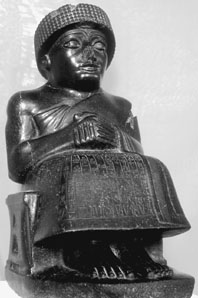

 | Page 1217 |  |
director, xia nai, Su developed an independent power base with his former Beijing University students, many of whom came to occupy important positions in the provinces. As provincial-level archaeology became increasingly important in the course of China’s economic reforms, their adoption of Su’s ideas have shaped a new, regionalist discourse in Chinese archaeology.
References
For references, see Encyclopedia of Archaeology: The Great Archaeologists, Vol. 2, ed. Tim Murray (Santa Barbara, CA: ABC-CLIO, 1999), pp. 597–599.
The Sumerians were the first recorded occupants of the southern half of mesopotamia; the northern half of this region was referred to as Akkad, with the line of demarcation at Nippur. Famous as the earliest literate society, the Sumerians were unknown until the decipherment of the cuneiform tablets in the nineteenth century revealed the existence of a language (Sumerian) that predated the languages of the Babylonians and Assyrians (which were related to Akkadian, the language of the people of Akkad). The Sumerians are thought to have migrated from the mountains of Elam, almost certainly before the fourth millennium b.c., to the swamps at the head of the Persian Gulf. They drained the swamps, developed means of using floodwaters for irrigation, and established agriculture in the region. Agricultural surpluses became a basis of Sumerian wealth and underpinned intensive participation in long-distance trade as far east as the Indus Valley. Although the Sumerians influenced areas far outside their borders in southern Mesopotamia (certainly through the use of writing), the core of the culture lay in the great city-states such ur, Eridu, Lagash, Larsa, Nippur, and Uruk, which were often at war with each other. Notwithstanding shared language and strong cultural and religious ties, political volatility and instability were common threads through Sumerian history at least until the sacking of Ur in 2004 b.c.

Gudea, ensi (governor) of Lagash, ca. 2100 B.C.
(Image Select)
See also
Indus Civilization; Woolley, Sir Leonard
References
Crawford, Harriet. 1990. Sumer and the Sumerians. Cambridge: Cambridge University Press.
Postgate, J.N. 1992. Ancient Mesopotamia. London: Routledge.
Sutton Hoo, a site located in Suffolk, England, was the cemetery of the Anglo-Saxon kings of East Anglia. It has been argued that it is the burial of the sixth-century king Raedwald (a.d. 599–635). The site (which comprises two mounds) was excavated in 1938–1939, with the first mound being explored under the direction of archaeologist Charles Phillips. He found a large ship burial with spectacular grave goods. Of particular note are a helmet, sword, and shield, but the grave goods include items of personal adornment in gold and glass, gold coins, and an array of silver vessels. The grave goods, now part of the collection of the british museum,
 |  |